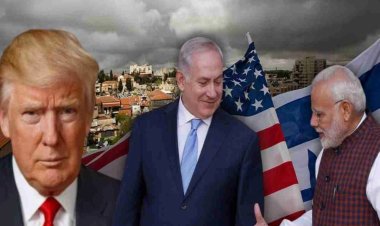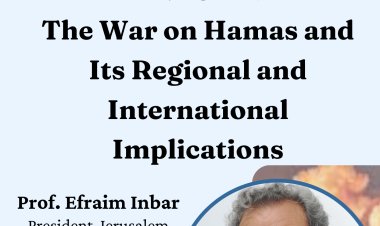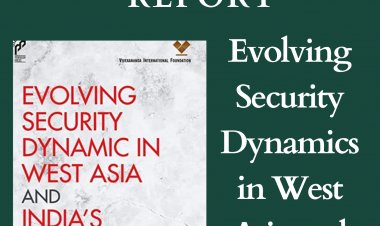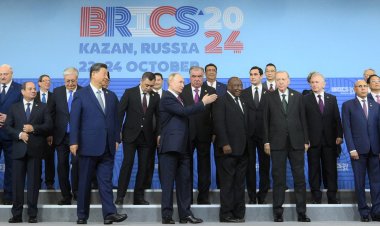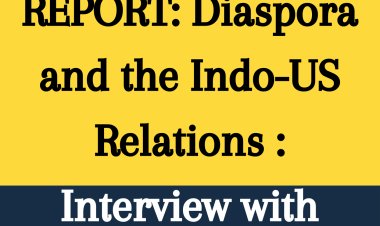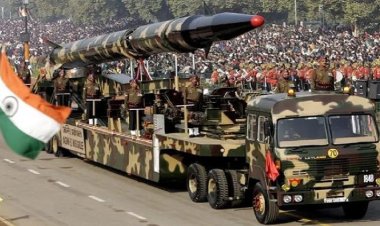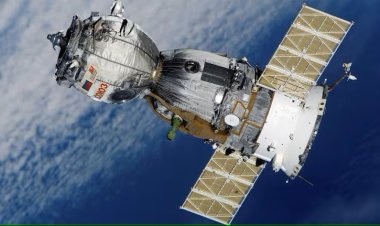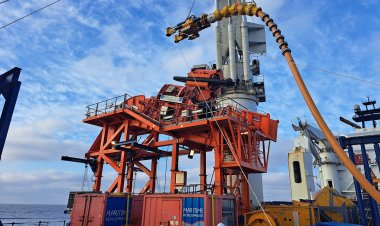A new era in global economic dominance: India-Middle East-Europe Economic Corridor vs. China
The establishment of the IMEEC signifies a significant event in modern geopolitics and international economics. As shown, this ambitious initiative not only has the ability to reshape global economic scenarios but has also attracted careful interest from China, which is dealing with its own array of economic difficulties
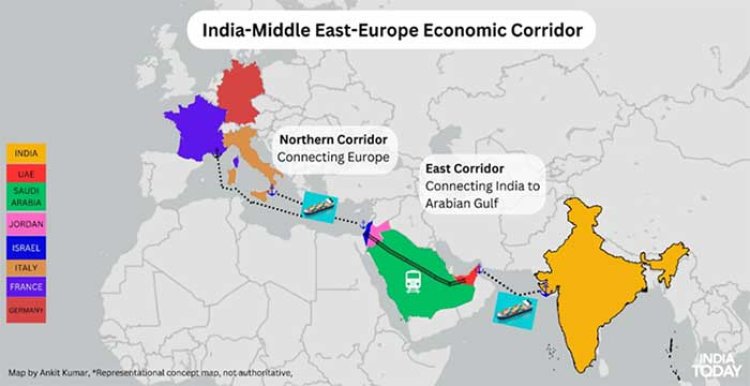
Analysis
By Vaasu Sharma
The main focal point that arose from the most recent yearly G20 summit in New Delhi did not stem directly from the G20 activities, thereby underscoring the intricate intricacies of global diplomacy. It, rather, originated from the outskirts of the summit, which exemplifies the captivating and dynamic nature of diplomatic engagements. The official introduction of the India-Middle East-Europe Economic Corridor (IMEEC) was a captivating development, which became evident through the presentation of a comprehensive and extensive proposal via a Memorandum of Understanding (MoU). The entities responsible for this significant proposal encompassed a consortium of countries such as India, the United States, the United Arab Emirates (UAE), Saudi Arabia, Italy, France, Germany, and the European Commission.
The consortium's unexpected revelation of the IMEEC plan left observers astonished. The presence of the President of the United States, Joe Biden, added weight to the importance of this Memorandum of Understanding (MoU), characterizing its signing, as a pivotal event. Biden characterized it as a momentous undertaking that would encompass sundry pivotal facets of contemporary infrastructure and commerce, particularly in the realms of transportation, data connectivity, sustainable electricity grids, and the establishment of pristine hydrogen pipelines. This ambitious project signifies a significant milestone in the realm of economic diplomacy, signifying a major reorganization of the economic landscape across various continents and heralding a transformative change of great importance.
At the initial impression, the IMEEC may seem like an endeavor to isolate China. However, a perceptive and discerning observer of contemporary international relations would dismiss such a simplistic assertion. The nations participating in this endeavor uphold strong and intricate trade relationships with China, thereby ruling out any ideas of isolation. It is widely recognized that severing connections with Beijing would have significant repercussions, given that both the United States and India heavily rely on imports from China. The undeniable fact in the present global scenario is that China occupies a pivotal position in the global economy and the intricate network of global supply chains, a situation that is unlikely to change in the near future. In contrast, the participation of China, or, at the very least, the incorporation of Chinese trade, is vital for the economic feasibility of the IMEEC. For instance, if Beijing were to transport its goods to the port of Gwadar and subsequently ship them to a port in the UAE before incorporating them into the IMEEC, the entire project would generate significant advantages.
During the inaugural address at the unveiling of the IMEEC, Prime Minister Modi underscored that this initiative was not formulated to pose a threat to any nation and would not plunge participating countries into debt, a stark contrast to the Chinese Belt and Road Initiative (BRI). However, the IMEEC unquestionably poses a significant challenge and competition to Beijing, although it does not explicitly position itself as an initiative aimed at isolating China. The IMEEC presents a robust strategy to introduce substantial competition to China, with the involvement of the Western nations and India, with the goal of curbing or at least reducing Beijing's monopoly and influence. Thus far, the world has predominantly regarded Beijing as the dominant and overpowering force that employs its substantial financial resources to unilaterally supervise infrastructure development across diverse continents. In essence, the development of global infrastructure has predominantly been associated with China through the Belt and Road Initiative (BRI), where the terms and conditions were primarily determined by Beijing itself.
The IMEEC is a cooperative endeavor among nations that have significant financial resources or can mobilize funding from multilateral economic institutions such as the World Bank and the Asian Development Bank (ADB). Saudi Arabia and the United Arab Emirates (UAE) are prominent among these participants, boasting impressive sovereign wealth funds and substantial fiscal reserves. Additionally, the United States, with its massive economy, is well positioned to play a pivotal role as a major financial contributor to the project.
In addition, Europe possesses substantial economic strength and, in a more nuanced manner, has a tendency to counteract China's influence. Europe has been eagerly awaiting the emergence of an initiative like the IMEEC, which would offer a discreet way to counter Beijing's influence. Furthermore, Europe has the potential to reap significant advantages from the IMEEC, as the initiative is anticipated to lower transportation costs for imports and exports, directly impacting its economies.
In the realm of global politics, there have been many initiatives and ambitious strategies throughout geopolitical history that have been recognized as potential catalysts for change, especially when it comes to countering Beijing's impact. Nonetheless, a large portion of these grandiose ideas remained mere conjectures and never materialized into tangible realities. The IMEEC sets itself apart by possessing a distinctive sense of credibility, which can be attributed to the stature and potential contributions of the participating nations within the global arena.
India, a crucial element within the IMEEC framework, enjoys unparalleled trust and reliability on the global stage, thanks to its rapidly growing economy and skilled diplomacy within international forums. It is noteworthy that India's vast geographical expanse, along with a favorable demographic dividend, positions it as a formidable market. In terms of the corridor, India stands out with its dual capacity to both make significant contributions through production and absorb a substantial volume of goods. Moreover, IMEEC has the potential to be developed with a focus on sustainability, aligning with India’s green transition goals, elevating the nation’s regional prominence, and enabling Indian enterprises to participate equitably in infrastructure development. Additionally, the corridor promises to secure supply chains, generate employment opportunities, and enhance trade facilitation and accessibility.
Crucially, India possesses the trustworthiness to secure funding and loans from a range of sources, including multilateral lending organizations like the World Bank and sovereign entities like Japan. Japan, in particular, has an unwavering belief in India's borrowing capability and provides loans on highly favorable terms, as demonstrated by projects like the Delhi Metro. These Japanese loans have further expedited the development of crucial infrastructure projects throughout India.
Henceforth, the IMEEC emerges as a growing force, with each partner bringing their distinct capabilities and considerable assets to the forefront, thus bestowing the endeavor with the capacity to greatly transform the geopolitical panorama. China has taken a cautiously optimistic position, albeit with a caveat, in the context of the IMEEC. China's embrace of the IMEEC is contingent upon a discerning acceptance, relying on the comprehension that this endeavor shall not be wielded as a geopolitical instrument to undermine China's vested concerns. This nuanced response highlights China's acknowledgment of the intricate and evolving dynamics in the global geopolitical context.
At the same time, China has effectively downplayed Italy's stated desire to exit the Belt and Road Initiative (BRI), which provides proof of the complexity and unpredictability present in today's global politics. This apparent downplaying of Italy's choice demonstrates China's recognition that the international arena is defined by a mix of changing alliances, interests, and approaches. It emphasizes the realization that while initiatives such as the IMEEC are emerging as potential counterweights, the overarching geopolitical landscape remains a multifaceted and unpredictable domain.
At its core, China's cautious embrace of the IMEEC and its measured reaction to Italy's withdrawal from the BRI highlight the intricate interplay of interests and strategies in the international arena. These advancements showcase the changing dynamics in global politics, where initiatives like the IMEEC hold significant positions, while the wider scenario continues to be a complex mix of shifting alliances and factors..
In another ongoing change, China's economic situation has recently encountered major difficulties, distinguished by evident obstacles that have caused significant reductions in both the imports and exports of the nation. Consequently, this phase of economic fragility has generated a sense of uncertainty and uneasiness surrounding the proposition for the IMEEC. The unease within China's economic corridors is a result of a complex set of circumstances. Primarily and above all, the substantial decrease in imports and exports has revealed vulnerabilities in China's economic framework, underscoring the need for careful navigation of external economic developments. In this context, the IMEEC, with its potential to reshape regional trade dynamics, becomes a major concern for Beijing.
Furthermore, China is confronted with the task of managing rising levels of debt and other intricate economic factors that have been magnified by the recent global economic circumstances. Additionally, these financial limitations have heightened the feeling of prudence regarding external economic endeavors, such as the IMEEC. The potential ramifications of this corridor on China's economic relationships, trade routes, and regional influence are contemplated with prudence and circumspection. The worries originating from China regarding the IMEEC proposal are intricately connected to its current economic fragility.
To conclude, the establishment of the IMEEC signifies a significant event in modern geopolitics and international economics. As shown, this ambitious initiative not only has the ability to reshape global economic scenarios but has also attracted careful interest from China, which is dealing with its own array of economic difficulties. In the present era of geopolitical instability, the IMEEC serves as a representation of both potential and caution. The influence it exerts on the international platform, alongside China's attentive monitoring, demonstrates the intricate web of aspirations and deliberations that characterize our contemporary world. As this endeavor unfolds, its impact on global economics and politics will unquestionably become a focal point of worldwide discourse, highlighting the ever-evolving nature of our interconnected globe.
Disclaimer: This paper is the author's individual scholastic contribution and does not necessarily reflect the organization's viewpoint.
Vaasu Sharma is a Foreign Policy Analyst based in India. He is pursuing his Ph.D. at the University of Haifa in the International Relations Department. He previously worked with WION Tv Channel as a Research Consultant in New Delhi. He has done his Master in International Relations with a specialization in Diplomacy Studies from the University of Haifa in Israel. He was also associated with BRICS International Youth Forum in India from 2016 to 2017.


